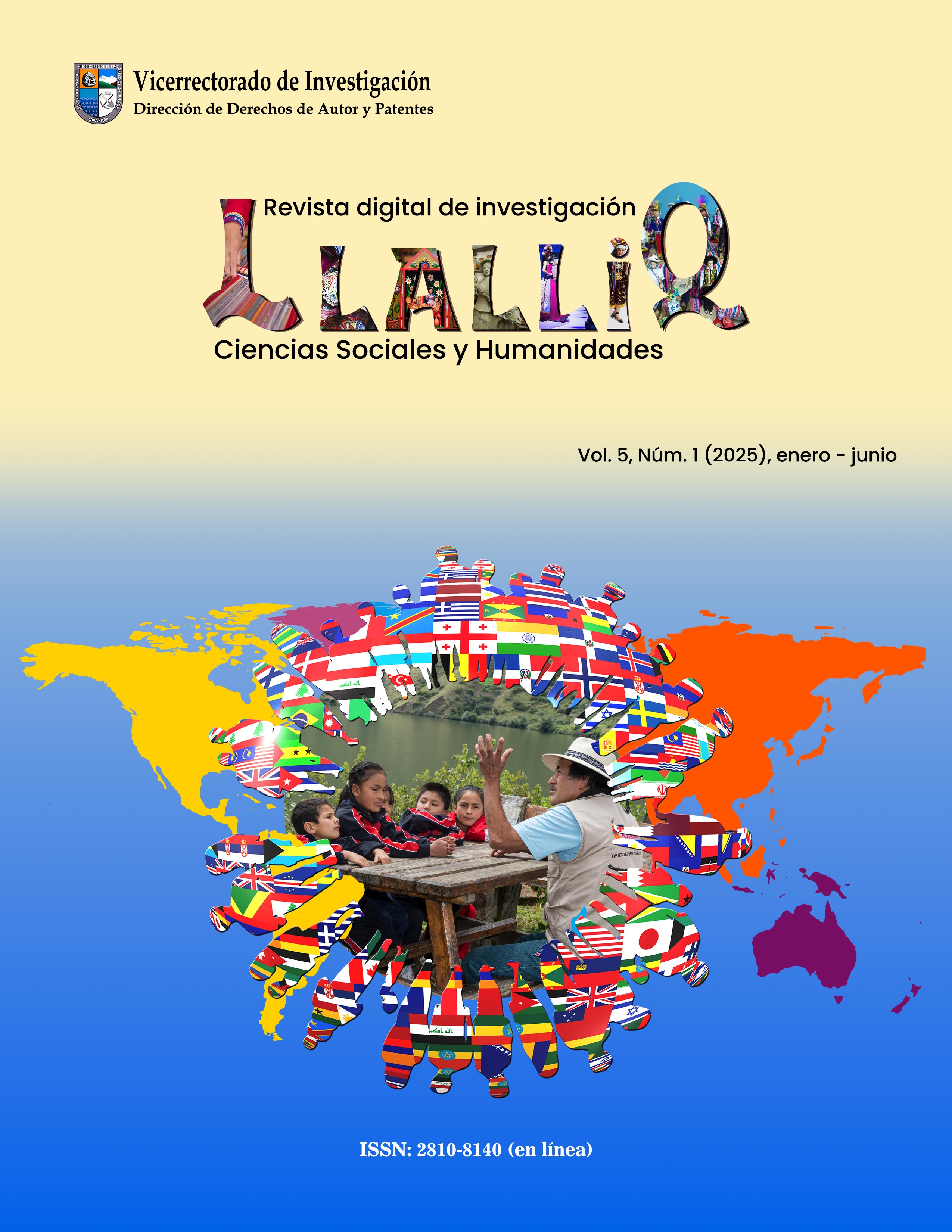Relationship between communication styles and organizational climate in health personnel: the case of Huarupampa in Huaraz, Peru
Main Article Content
Abstract
This article analyzes the relationship between communication and organizational climate at the Huarupampa Health Center, Huaraz, Perú. Using quantitative research with a non-experimental, correlational, and cross-sectional design, two questionnaires were administered—one to evaluate the dimensions of communication (upward, downward, and horizontal) and another to assess the organizational climate (human potential, organizational design, and culture). The sample consisted of 50 healthcare professionals with both university and technical education. The results showed a moderate positive correlation between the two variables, suggesting that strengthening internal communication contributes to a more favorable work environment. These findings have important implications for human resource management in the health sector, as they highlight areas for improvement in information flow and staff integration.
Downloads
Article Details

This work is licensed under a Creative Commons Attribution 4.0 International License.
References
Asamblea Mundial de la Salud (2007). Salud de los trabajadores: Plan de acción mundial (WHA60.26).
Barreto, L., & Madrid, C. (2022). Influencia de la comunicación en el clima organizacional de los trabajadores asistenciales del área de urgencias de la ESE Hospital San Antonio de Taraza – Colombia [Tesis de maestría, Universidad Simón Bolívar]. Repositorio Institucional UNISIMÓN. https://hdl.handle.net/20.500.12442/10132
Chiavenato, I. (2007). Introducción a la teoría general de la administración (7ª ed.). McGraw-Hill.
Cortez, C. (2020). Comunicación organizacional y clima laboral en los trabajadores del Centro de Salud Metropolitano - Abancay [Tesis de maestría, Universidad Nacional Mayor de San Marcos]. Repositorio Institucional UNMSM. https://hdl.handle.net/20.500.12672/14828
Del Ángel, E., Fernández, A., & Santes, M. (2020). Clima organizacional y satisfacción laboral en trabajadores de la salud. Revista de Investigación en Salud, 30(1), 273–283. https://doi.org/10.14482/INDES.30.1.303.661Redalyc+1Redalyc+1 DOI: https://doi.org/10.22201/eneo.23958421e.2020.3.789
Duffy, R., Douglass, R., Autin, K., & Allan, B. (2021). Examining the link between decent work and physical health: An empirical test in the South African context. Journal of Counseling Psychology, 68(3), 310–319. https://doi.org/10.1037/cou0000538 DOI: https://doi.org/10.1037/cou0000538
Guevara, S., & Peñalver, M. (2024). Impacto del clima organizacional en el desempeño laboral en instituciones de salud. Ciencia y Movimiento,10(19). https://doi.org/10.35381/cm.v10i19.1357 DOI: https://doi.org/10.35381/cm.v10i19.1357
Hernández, R., Fernández, C., & Baptista, M. (2014). Metodología de investigación. Interamericana Editores.
Jianchun, L. (2024). The impact of organizational climate and employee happiness on job satisfaction. BMC Psychology, 12(1), 1–12. https://doi.org/10.1186/s40359-024-02269-5 DOI: https://doi.org/10.1186/s40359-024-02269-5
Julca, F., & Nivin, L. (2020). Una aproximación al desarrollo sociocultural de Huaraz. Saber Discursivo, 1(1), 106-121. https://doi.org/10.32911/saberdiscursivo.2020.v1.n1.722
Lepeley, T., Beutell, N. J., & Torres, C. (2021). Human capital development and its impact on organizational performance: A human-centered approach. International Journal of Human Resource Studies, 11(2), 35–50. https://doi.org/10.5296/ijhrs.v11i2.18344
Organización Mundial de la Salud (OMS). (2007). Salud de los trabajadores: Plan de acción mundial (WHA60.26). https://apps.who.int/gb/ebwha/pdf_files/WHA60/A60_R26-sp.pdf
Macetas Porras, M. N., & Carhuancho-Mendoza, I. M. (2024). Estrategias de comunicación y compromiso organizacional: Impulsores del desempeño laboral. Revista Espacios, 45(5), 106-119. https://doi.org/10.48082/espacios-a24v45n05p08 DOI: https://doi.org/10.48082/espacios-a24v45n05p08
Ministerio de Salud (2008). Cuestionario de Clima Organizacional. Ministerio de Salud.
Nivin, L. (2021). Aproximación a las identidades culturales en Huaraz. En D. Barrón y F. Zubieta (eds.), Áncash ante el Bicentenario (pp. 168-180.) Asociación de Escritores Ancashinos.
Portugal, J. (2005). Cuestionario de Comunicación Organizacional. Bellas Artes.
Prasetyo, I., Aliyyah, N., Khadijah, S. N., Gustomi, M. P., Irawan, H., Rochman, A. S., Pramitasari, D. A., Farid, M. M., & Kalbuana, N. (2021). Effects of organizational communication climate and employee retention toward employee performance. Journal of Legal, Ethical and Regulatory Issues, 24(S1), 1–12. https://www.researchgate.net/publication/355412192
Skogstad, P., Einarsen, S., & Nielsen, M. B. (2022). The role of culture and leadership in shaping ethical organizational climates. Journal of Business Ethics, 179(1), 143–158. https://doi.org/10.1007/s10551-021-04884-3 DOI: https://doi.org/10.1007/s10551-021-04884-3
Valencia, J., & Castaño, J. (2022). Comunicación organizacional y felicidad en el trabajo. Investigación y Desarrollo, 30(2), 191–218. https://doi.org/10.14482/indes.30.2.8575861 DOI: https://doi.org/10.14482/indes.30.2.658.45
Wibowo, H., & Purwandari, D. (2020). The influence of organizational design on employee performance. International Journal of Management Excellence, 14(2), 1971–1976. https://doi.org/10.17722/ijme.v14i2.1073
